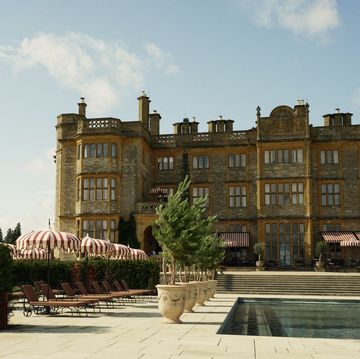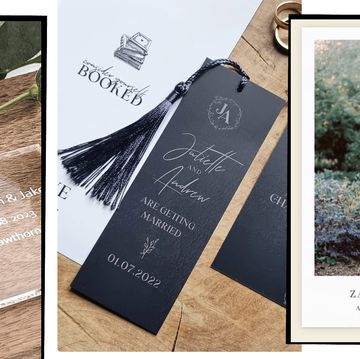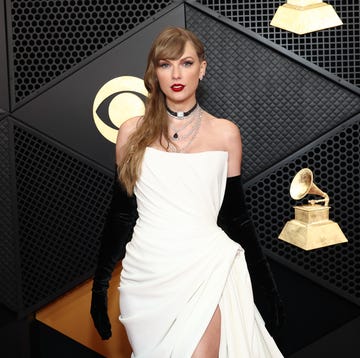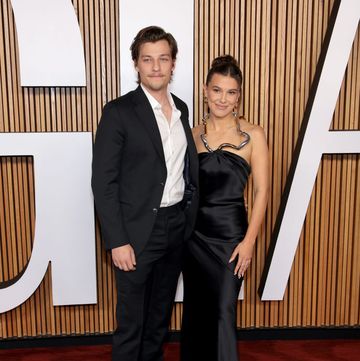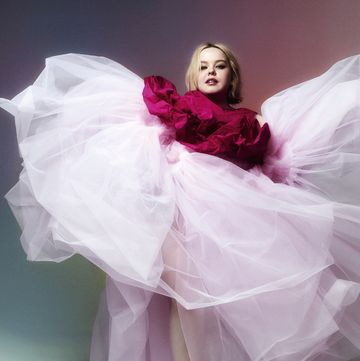The big question: was the film adaptation of Fifty Shades of Grey sexy? To borrow the lingo of an obedient submissive: ‘No, Sir’
EL James’ obsession-inspiring book has been credited with turning swathes of women on to erotica and provoking a spiked interest in BDSM (bondage, discipline, dominance, submission, sadism and masochism, for the uninitiated). But its film iteration is a baffling mix of uncomfortable and amusing.
Some good news first: director Sam Taylor-Johnson’s big screen rendering succeeds in advancing the soft-core-lady-porn conversation - because it didn't feel like sex was the film’s main event.
The beyond-the-bedroom power-play was handled well, chiefly thanks to the comic timing of its leads, Dakota Johnson and Jamie Dornan, who play Anastasia Steele and the titular Christian Grey respectively. Ramping up the humour also served to persuade the critical viewer that the film is self-aware enough to pause and revel in its own absurdity.
Which brings us to Christian Grey’s famous Red Room of Pain: impressive, in as much as it is staggeringly well kitted out with high-quality leather accessories (always appealing). But once inside his sex lair, Grey appears to be a man with all the gear and little idea. Comical. The complicated but not complexly drawn character could do with a lesson in the art of the tease. The sex scenes were a snooze – largely without nuance, just drippy ice cubes, formulaic flesh flashing and vacant-eyed flogging. Yawn.
It seems futile to examine whether the film adaptation successfully represents female sexual empowerment because the limitations of the original text (changes were rigorously policed by EL James) meant any big-screen translation would seem flaw-strewn to most equality-championing humans. I am not one of the 100m who have read the books but the consent issue feels muddy.
Steele is a virgin student bamboozled by the rich and powerful Grey – who ensconces her in his flashy apartment (which has hosted 15 former lovers) so he can have his way with her, on his terms, at his will. Sure, he’s totally explicit about his conditions (he draws up a contract and makes a few concessions at her request) but she is naïve, and falls in love with him, which makes her vulnerable. Shudder.
That said, both Johnson and Taylor-Johnson helped to realise a relatively headstrong Ana on screen. She’s not passive, and she plays the control game too - challenging Grey’s sexual appetites, prising flashes of tenderness from this emotionally distant, inscrutable man, and driving him wild with frequent lip nibbling. If smart sex is all about establishing trust and managing control, Ana’s getting there. And if the film inspires people to explore their own sexual desires more freely (with a consenting partner), then three cheers for that.
Thankfully, the film's more unsettling bits were interrupted by flashes of funny – so it was surprisingly entertaining. Grey straps Ana into all sorts of shiny, shimmery things – sports cars, helicopters, handcuffs – all of which provoked cheers from the audience. But post-whoop uncomfortable thoughts percolate: the trappings of wealth are seductive. Rich and powerful men like Grey usually get what they want.
There’s much that’s problematic about this story that is totally at odds with notions of female empowerment and self-directed sexual liberation. In the end, Ana has the last word, but her power still seems a lot more fragile than Grey’s, which ultimately, is not funny, not at all.


